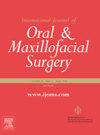牙科种植中动态导航系统的比较:体外研究的系统性文献综述。
IF 2.2
3区 医学
Q2 DENTISTRY, ORAL SURGERY & MEDICINE
International journal of oral and maxillofacial surgery
Pub Date : 2025-02-19
DOI:10.1016/j.ijom.2025.02.005
引用次数: 0
摘要
动态导航是种植手术中的一项创新技术,通过为临床医生提供实时引导,提高种植体植入的精确度。该技术可在手术过程中进行现场调整,从而降低并发症风险并改善种植效果。本系统性综述旨在利用体外模型评估各种动态导航系统在种植体植入中的精确度。我们在多个数据库中进行了全面的文献检索,重点关注2016年至2024年间发表的、报告三维(3D)和角度偏差的研究。其中包括七项体外研究,分析了五种动态导航系统(ImplaNav、Navident、Denacam、X-Guide 和 DCARER),共评估了 649 个种植体。结果显示,平均冠状三维偏差在 0.46 毫米到 1.58 毫米之间,而根尖偏差在 0.48 毫米到 2.12 毫米之间。角度偏差在1.01°到4.24°之间。冠状三维偏差最大为 4.80 毫米,角度偏差最大为 10.70°。所有系统都在临床可接受的范围内表现出较高的准确性,其中 X-Guide 的数值误差最小。跟踪技术、校准方法和用户经验等因素都会影响精确度。总之,与徒手方法相比,动态导航能明显提高种植体植入的准确性,但仍取决于技术因素。本文章由计算机程序翻译,如有差异,请以英文原文为准。
Comparison of dynamic navigation systems in dental implantology: a systematic literature review of in vitro studies
Dynamic navigation is an innovative technology in implant surgery that enhances the precision of implant placement through real-time guidance for clinicians. This technology allows on-the-spot adjustments during surgery, reducing the risk of complications and improving implant outcomes. The aim of this systematic review was to assess the accuracy of various dynamic navigation systems in implant placement using in vitro models. A comprehensive literature search was performed across several databases, focusing on studies published between 2016 and 2024 that reported three-dimensional (3D) and angular deviations. Seven in vitro studies were included, analysing five dynamic navigation systems (ImplaNav, Navident, Denacam, X-Guide, and DCARER), with 649 implants evaluated. Results showed mean coronal 3D deviations between 0.46 mm and 1.58 mm, while apical deviations ranged from 0.48 mm to 2.12 mm. Angular deviations varied between 1.01° and 4.24°. Maximum deviations reached up to 4.80 mm for coronal 3D deviation and 10.70° for angular deviation. All systems demonstrated high accuracy within clinically acceptable limits, with X-Guide showing the lowest numerical errors. Factors like tracking technology, calibration methods, and user experience were found to influence accuracy. Overall, dynamic navigation significantly improves implant placement accuracy compared to freehand methods but remains dependent on technical factors.
求助全文
通过发布文献求助,成功后即可免费获取论文全文。
去求助
来源期刊
CiteScore
5.10
自引率
4.20%
发文量
318
审稿时长
78 days
期刊介绍:
The International Journal of Oral & Maxillofacial Surgery is one of the leading journals in oral and maxillofacial surgery in the world. The Journal publishes papers of the highest scientific merit and widest possible scope on work in oral and maxillofacial surgery and supporting specialties.
The Journal is divided into sections, ensuring every aspect of oral and maxillofacial surgery is covered fully through a range of invited review articles, leading clinical and research articles, technical notes, abstracts, case reports and others. The sections include:
• Congenital and craniofacial deformities
• Orthognathic Surgery/Aesthetic facial surgery
• Trauma
• TMJ disorders
• Head and neck oncology
• Reconstructive surgery
• Implantology/Dentoalveolar surgery
• Clinical Pathology
• Oral Medicine
• Research and emerging technologies.

 求助内容:
求助内容: 应助结果提醒方式:
应助结果提醒方式:


